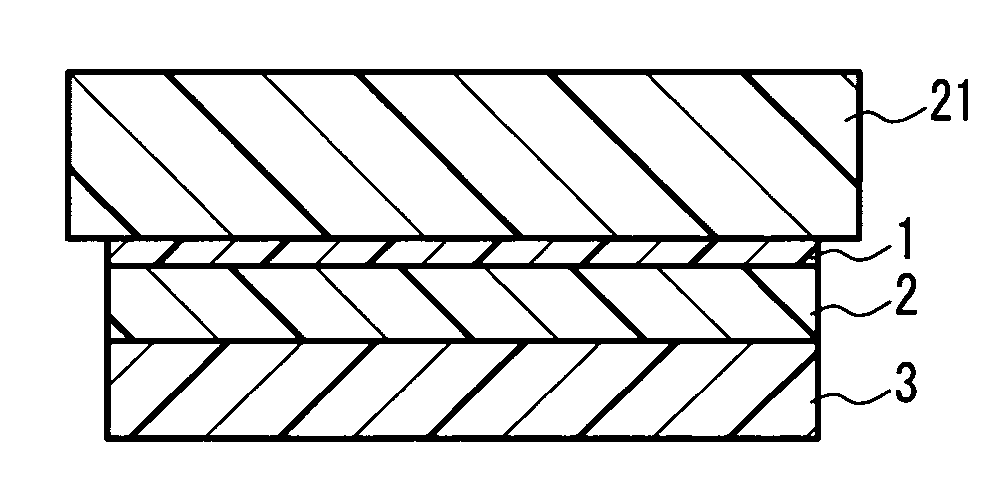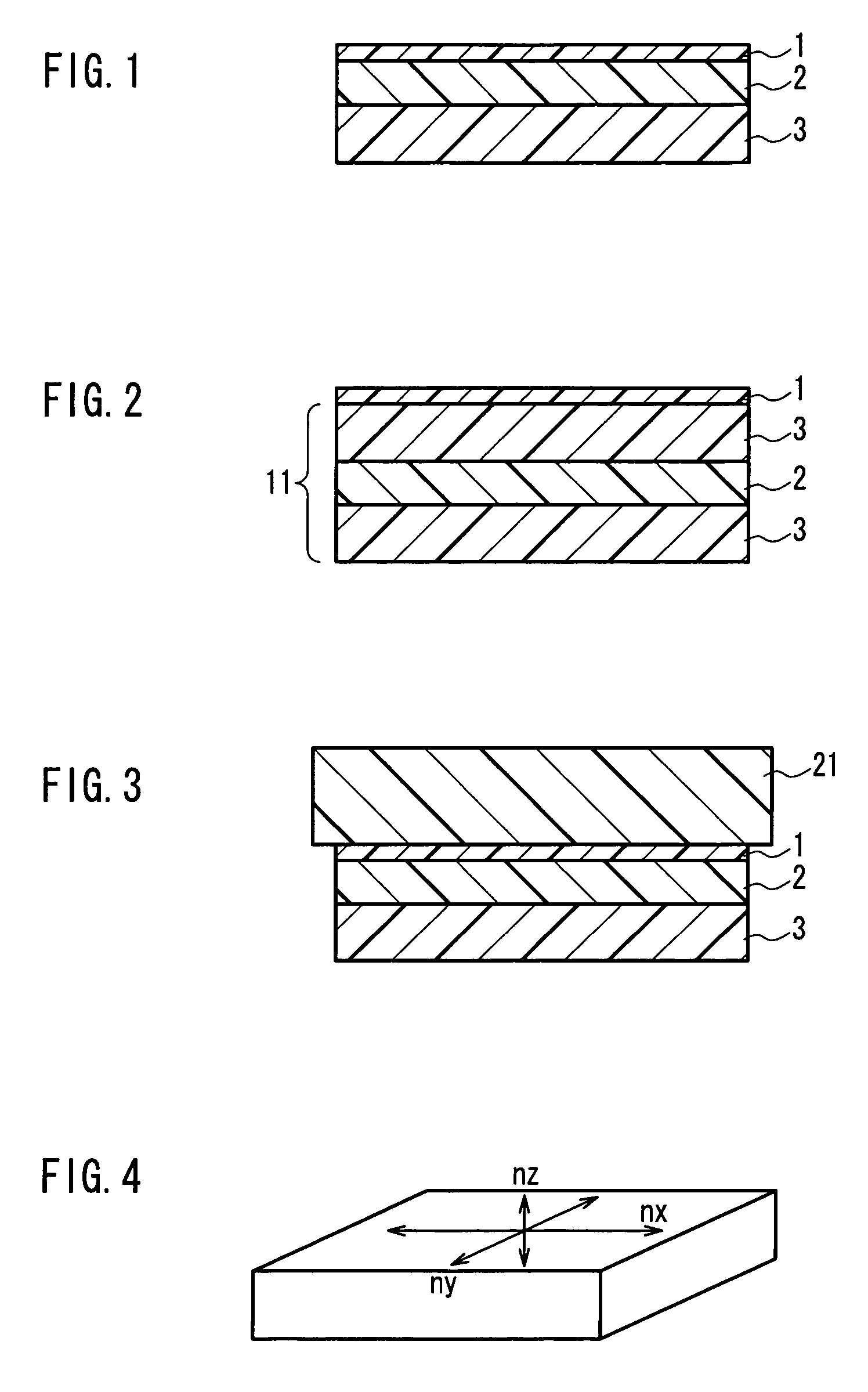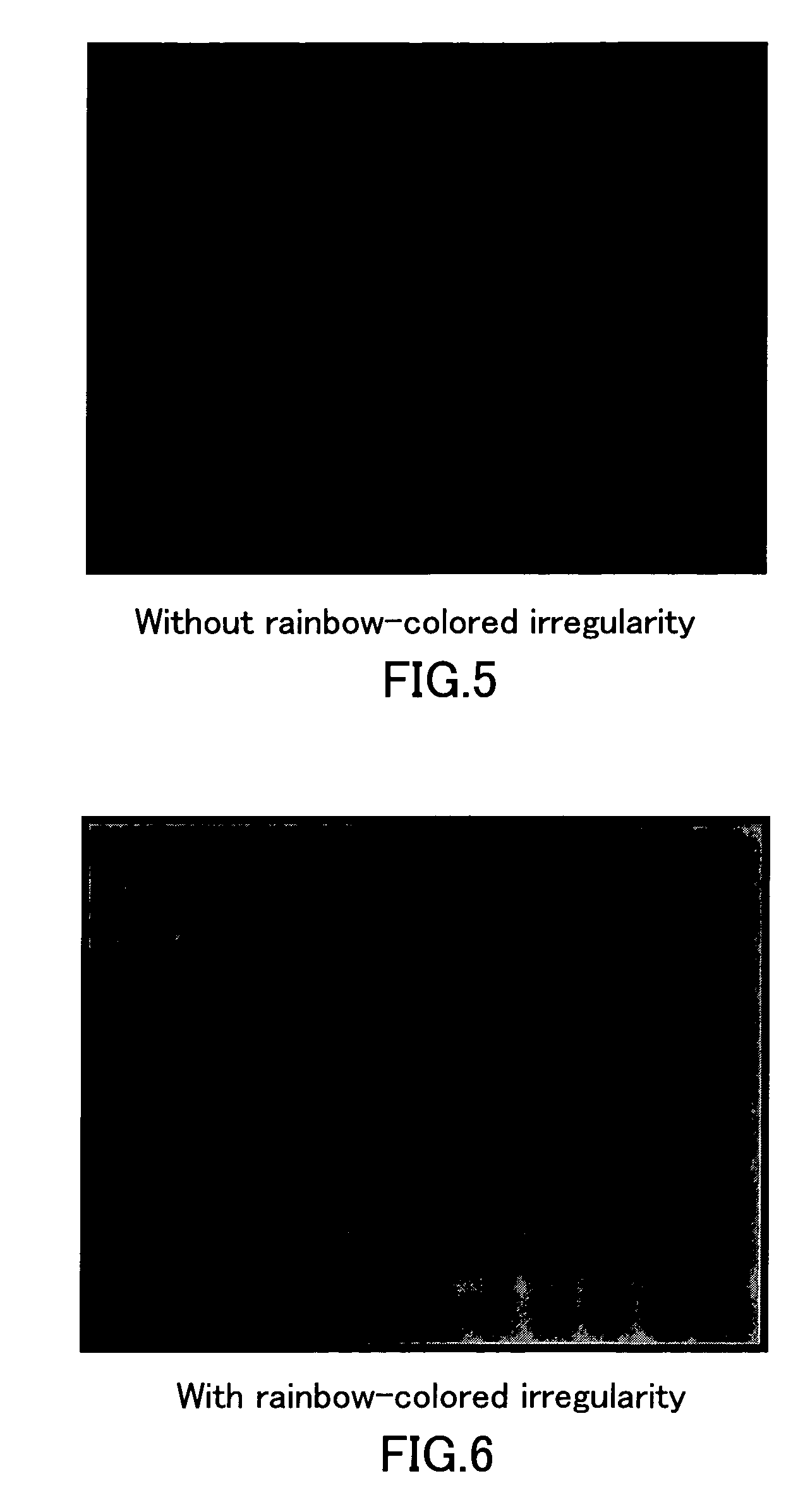Optical film and its manufacturing method
a manufacturing method and optical film technology, applied in the field of optical films, can solve the problems of inorganic base increasing the cost, complicated process, method for producing conventional optical films, etc., and achieve the effects of low cost, excellent optical properties, and low cos
- Summary
- Abstract
- Description
- Claims
- Application Information
AI Technical Summary
Benefits of technology
Problems solved by technology
Method used
Image
Examples
example 1
[0156]Polyimide, which was synthesized from 2,2-bis(3,4-dicarboxyphenyl) hexafluoropropane dianhydride and 2,2′-bis(trifluoromethyl)-4,4′-diaminobiphenyl, having a weight average molecular weight Ww) of 70,000 and a birefringence (Δn) of about 0.04, was dissolved in MIBK (methyl isobutyl ketone) so as to obtain a solution whose solid concentration was 15 wt %. A triacetylcellulose (TAC) film was stretched transversely 1.3 times its original length at 150° C. in a fixed-end transverse stretching so as to have a thickness of 75 μm, and the solution was applied onto the TAC film. This TAC film had a Δnd of 20 nm. By a subsequent heat treatment at 100° C. for 10 minutes, a solvent in the solution was evaporated and removed to form a layer, and at the same time, the TAC film was shrunk to shrink the layer, thereby obtaining a perfectly-transparent and flat optical film. The thus obtained birefringent layer had an optical property nx>ny>nz.
example 2
[0157]75 weight parts of an alternating copolymer made of isobutene and N-methyl maleimide (containing 50 mol % of N-methyl maleimide) and 25 weight parts of an acrylonitrile-styrene copolymer containing 28 wt % of acrylonitrile were dissolved in methylene chloride so as to obtain a solution whose solid concentration was 15 wt %. This solution was cast on a polyethylene terephthalate (PET) film covering a glass sheet, kept at room temperature for 60 minutes and subsequently peeled off from the PET film, which was then dried at 100° C. for 10 minutes and later 140° C. for 10 minutes, and further at 160° C. for 30 minutes, thereby obtaining a transparent film. The film had an in-plane retardation (Δnd) of 4 nm and Rth of 4 nm.
[0158]The solution as in Example 1 was applied onto the thus obtained transparent film. By a subsequent heat treatment at 100° C. for 5 minutes, a layer was formed on the transparent film, and thus a perfectly-transparent and flat film was obtained. By a 10% long...
example 3
[0159]Polyimide, which was synthesized from 2,2-bis(3,4-dicarboxyphenyl) hexafluoropropane dianhydride and 2,2′-bis(trifluoromethyl)-4,4′-diaminobiphenyl, having a birefringence (Δn) of about 0.05, was dissolved in ethyl acetate so as to obtain a solution whose solid concentration was 20 wt %. This solution was applied onto the base as in Example 1. By a subsequent heat treatment at 130° C. for 5 minutes, a solvent in the solution was removed by evaporation so as to form a layer, and at the same time, the layer was shrunk to provide a perfectly-transparent and flat optical film. The birefringent layer of this optical film had an optical property nx>ny>nz.
PUM
| Property | Measurement | Unit |
|---|---|---|
| thickness | aaaaa | aaaaa |
| refractive index | aaaaa | aaaaa |
| thickness | aaaaa | aaaaa |
Abstract
Description
Claims
Application Information
 Login to View More
Login to View More - R&D
- Intellectual Property
- Life Sciences
- Materials
- Tech Scout
- Unparalleled Data Quality
- Higher Quality Content
- 60% Fewer Hallucinations
Browse by: Latest US Patents, China's latest patents, Technical Efficacy Thesaurus, Application Domain, Technology Topic, Popular Technical Reports.
© 2025 PatSnap. All rights reserved.Legal|Privacy policy|Modern Slavery Act Transparency Statement|Sitemap|About US| Contact US: help@patsnap.com



